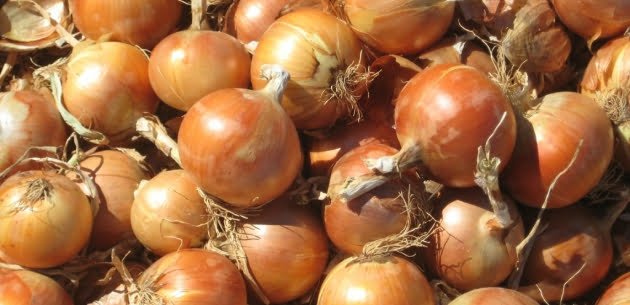EastFruit analysts report that onion prices in the region have remained mostly stable, much to the dismay of “resellers” who expected to profit from buying onions during harvest and selling them at a higher price in the spring.
However, different countries have different situations. Furthermore, in many countries, onion prices tend to spike in mid-late March every year. So, maybe there is still a chance to make money?
Let’s examine the situation in each country individually, starting with the large onion exporters.
Uzbekistan
The main onion exporter in the region, which we estimate could rank among the top five onion exporters in the world this season, is facing quality issues with its stored products. According to market players, there is still a large supply of onions, and new crop onions are already hitting the market in the southern regions.
Currently, the prices of export-quality onions in Uzbekistan are around 20 US cents per kg. This is the first time they have surpassed the purchase prices of onions during harvest, which were about 17 US cents per kg for similar quality. However, it is clear that the margin of 30 US dollars per ton is not enough to cover the storage costs and losses, so resellers are still operating at a loss.

But farmers who store their own onions have no reason to complain about the product price. After all, this price is slightly higher than the usual price at this time of year. Moreover, by mid-March in Uzbekistan, there is usually a rise in wholesale prices for onions, which often increase by 50% in four to five weeks. However, last year, onion prices did not increase, but rather decreased, although they were still at a record high.
Will the price increase this year in March-April? So far, there are no signs of a significant price hike, considering the stocks of old crop products and the good outlook for the early onion crop.
It should also be noted that onion prices in Russia are currently the same as in Uzbekistan. Moreover, Russia is even exporting onions to Poland. Therefore, a sudden surge in demand from Russia is unlikely.
We will not discuss Tajikistan, because this country, despite having very low onion prices, has banned its export.
Poland
Onion prices in Poland are now clearly too high for this time of year. This is due to the general shortage of onions in the European Union and the possibility of breaking price records.
However, at the same time, onion prices in Poland are dropping. This is because Poland is importing large amounts of onions from Russia, as well as receiving substantial shipments of onions from Uzbekistan and Kazakhstan.

As the graph shows, onion prices in Poland usually grow in March-April, but not every year. This year, a price increase cannot be ruled out, given the overall situation in the single EU market. And this could provide an extra boost for onion exports from Uzbekistan.
Ukraine
Unlike in Poland, the recent drop in onion prices in Ukraine has a different underlying cause. Here the product supply is high, and producers are trying to clear their stocks to avoid further losses, as the quality of many products is worsening. After all, the current wholesale price of onions is the same as the price during harvest, so those who attempted to profit from storing this product are still in the red. Wholesale prices are close to the long-term average.

Meanwhile, Ukraine is quickly ramping up its onion exports. And this is not surprising, as onion prices in Ukraine are much lower than in EU countries or in neighboring Moldova.

Will onion prices in Ukraine go up soon?
The experience of previous years shows that if the onion supply is still abundant in early March, then onion prices usually do not increase until the end of the season. However, this and the previous seasons are not typical, because there is a war in the country, and also because new producers in new regions have begun growing onions, without experience in growing and storing. This suggests the possibility of higher than usual storage losses, and the emergence of a certain shortage of high-quality onions in April-May. Especially since the local new crop onions, due to Russia’s occupation of the traditional cultivation regions in the south of the country, will hit the market later than usual.
Another feature of the season is the potential for price records for onions in the EU, which may support prices in Ukraine. Therefore, the prices for quality onions in the remaining months of the season may rise slightly, but they are unlikely to reach even close to the levels of a year ago.
Moldova
Those who started growing onions in Moldova last season, and there were many of them, clearly made a good decision. Provided, of course, that these producers have storage facilities for onions.
To date, Moldova is the only country where onions after harvesting have significantly increased in price. On average, onions in Moldova now cost 60% more than during their harvesting.
Accordingly, Moldova is also the only country where intermediaries managed to make money on the resale of onions. And even better, if they have not sold them yet, because there is an opportunity to earn even more in the coming weeks.

Given the low stocks of onions in the country and the prospects for rising onion prices in the EU, onion prices will increase in the near future, according to market participants. By the way, this is usually what happens in this market. At the same time, Ukraine will continue to have a significant impact on onion pricing in Moldova.




